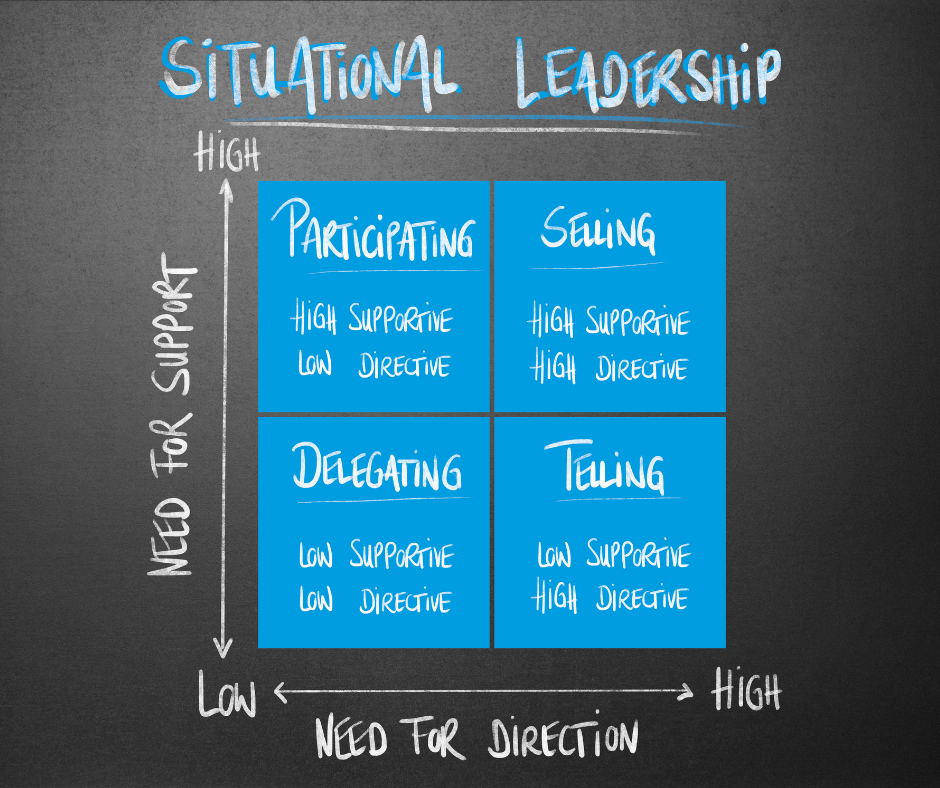Even before Daniel Goleman encouraged leaders to utilize multiple leadership styles, Ken Blanchard and Paul Hersey were teaching the need for flexibility in leadership. Blanchard and Hersey defined this concept in the mid-1970s as the Situational Leadership Model.
The Situational Leadership Model provides the leader with a roadmap or a guide for which style to use and when. This model guides both the relationship as well as task accomplishment in each step of the development journey.
High and low supportive behaviors on one axis and high and low directive behaviors on the other form four quadrants. The best leaders will change their supportive and directive behaviors to match the development level of those they are leading.
The Four Situational Leadership Styles
With the first style or the directing style (S1), the leader will simply direct a person to complete tasks. This style aligns best with those that are new to a task or skill.
After a short time, the leader will need to move to the next style: the coaching or explaining style (S2). This style will still rely on directing the follower, but this phase will include an equal emphasis on gaining understanding.
The third style, the supporting style (S3), requires much less directing from the leader. This style focuses more on building the confidence of an individual that knows the tasks they need to accomplish.
The last style is the delegating style (S4). This style is used when the developing person is both confident and competent to accomplish their tasks.
One Size Doesn’t Fit All
I was first exposed to the Situational Leadership Model reading Blanchard’s book “Leadership and the One Minute Manager“. These concepts made a lot of sense. In hindsight, I could see why at times my leadership frustrated those I developed. My natural leadership style is probably an S3. I found myself leading everyone with the same S3 style early in my leadership career because this came naturally. This was very effective for a few, but soon even they would become frustrated because of my lack of adaption. I’m getting better at moving between the four styles when appropriate, but it’s certainly something that requires intentionality.
We add value when we assess an individual’s development level and use situational leadership to adjust our style accordingly. Stretching ourselves beyond our natural leadership style will empower others and limit frustrations from our over or under-involvement.




